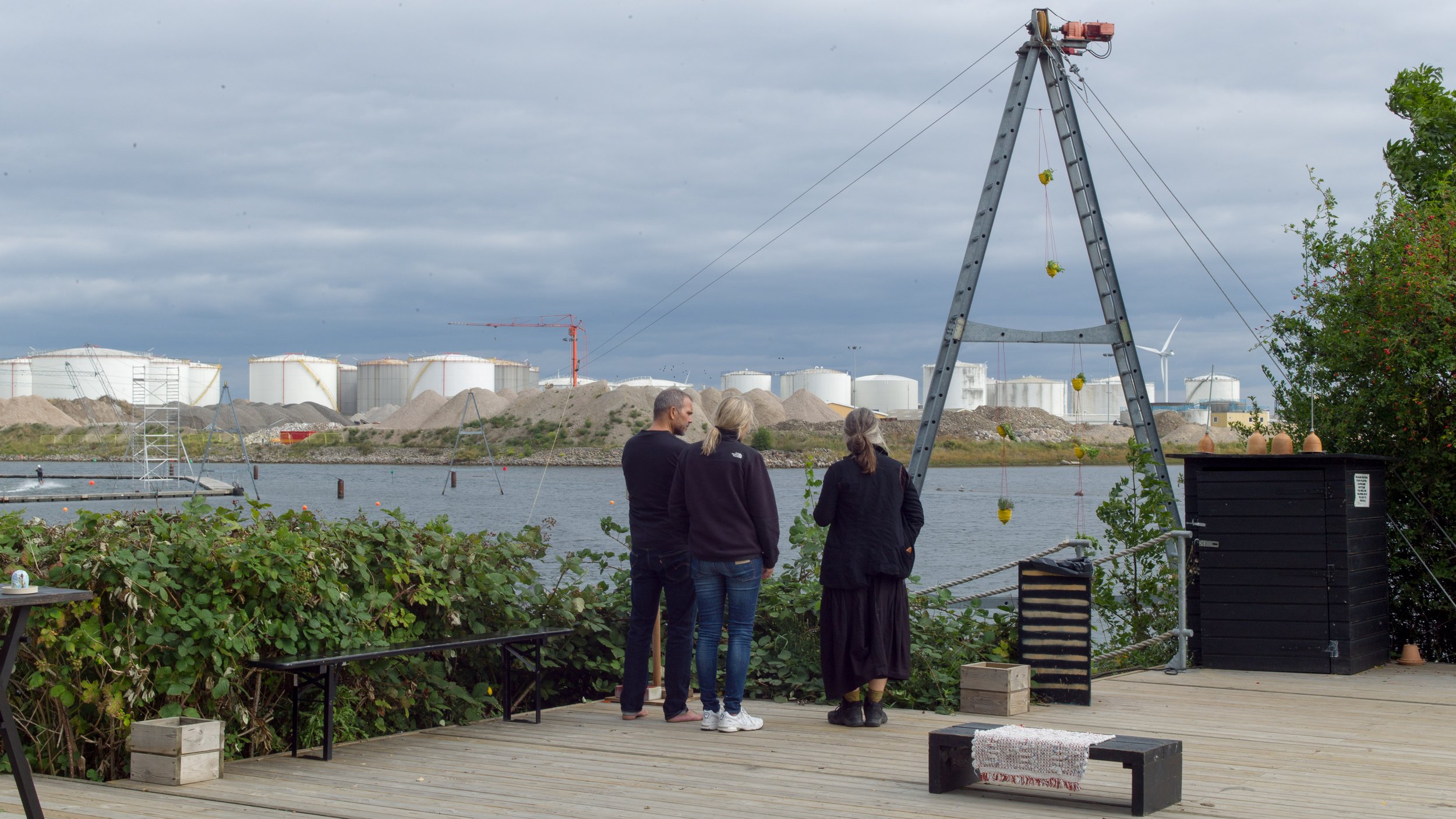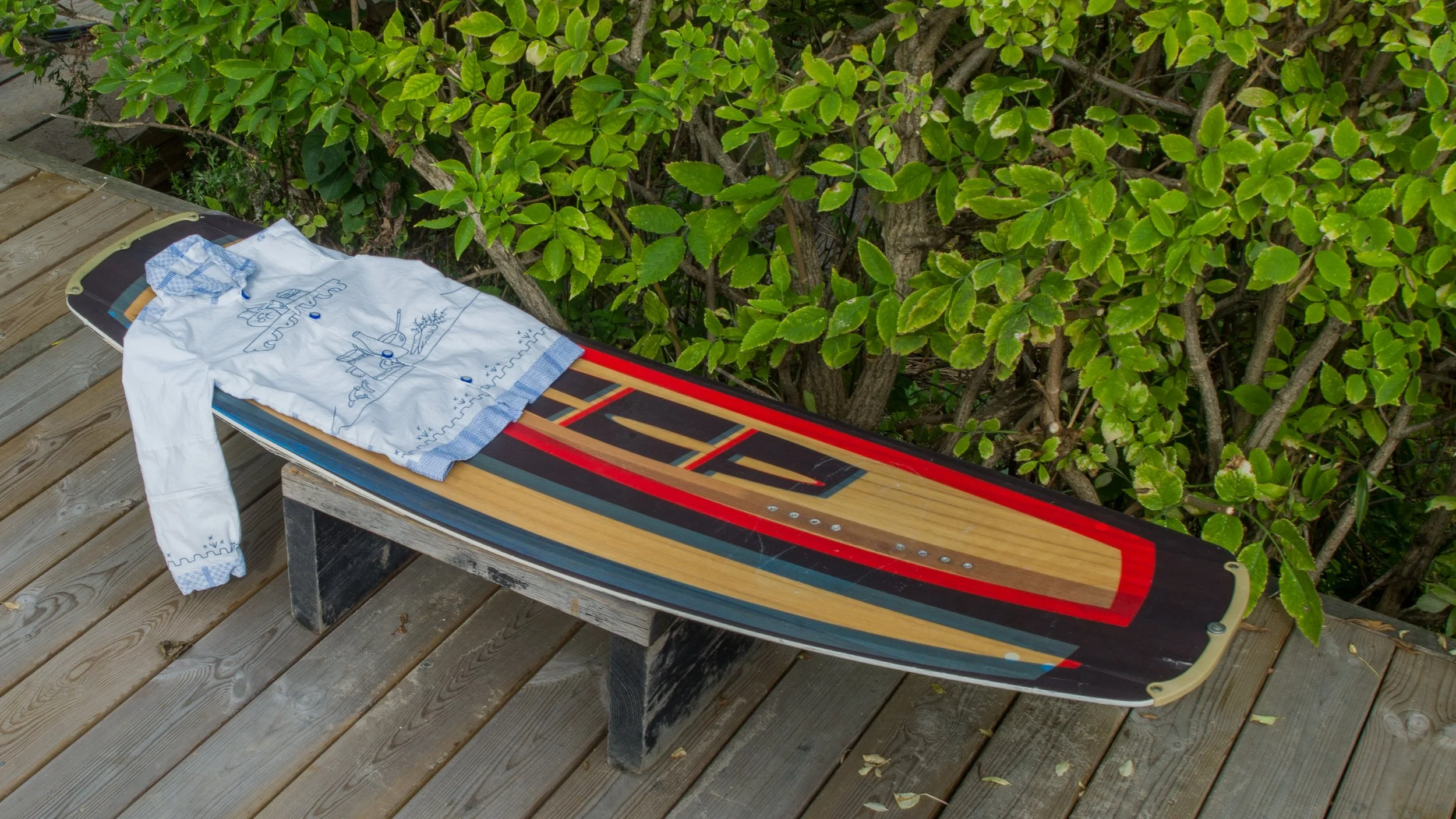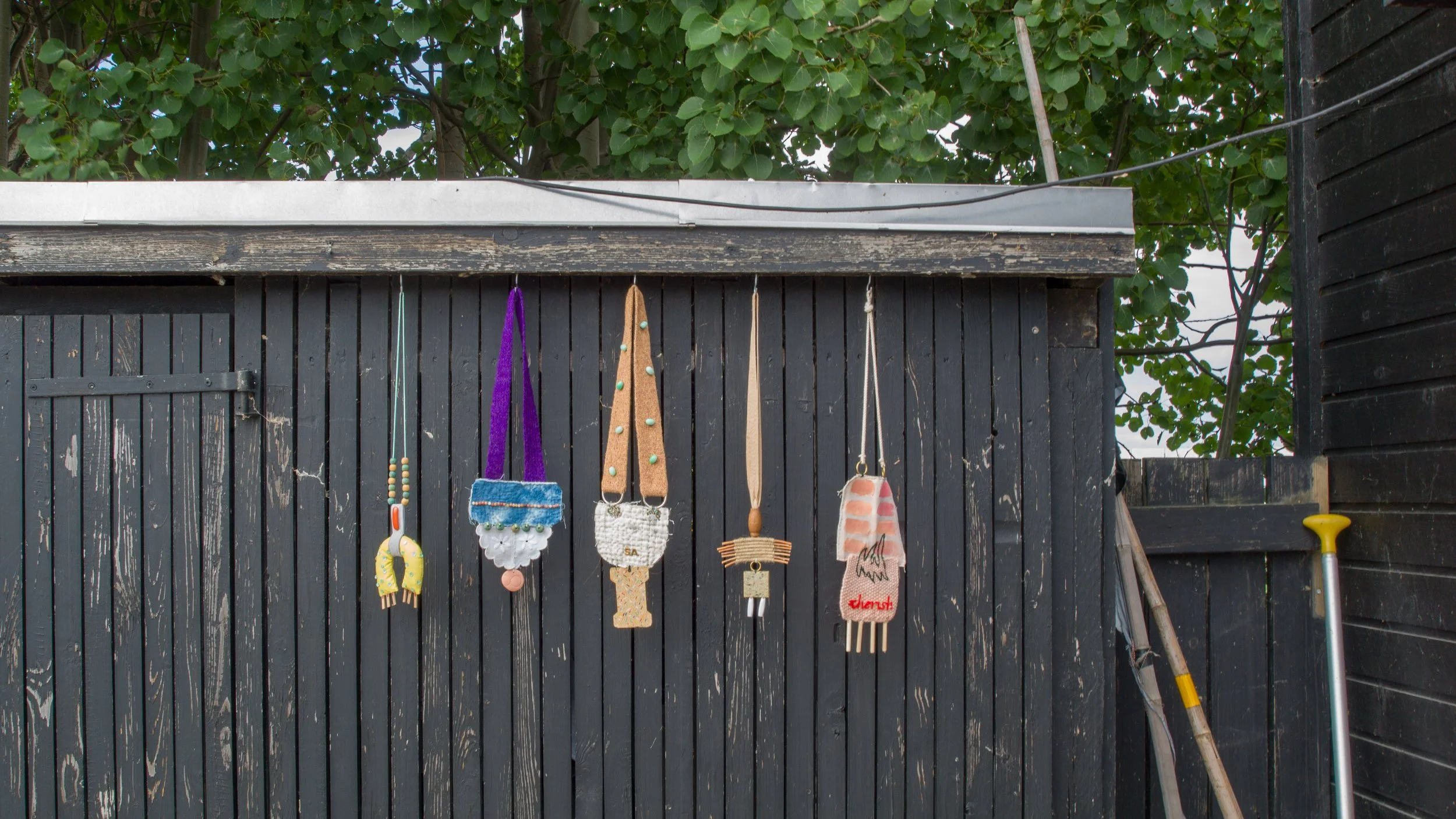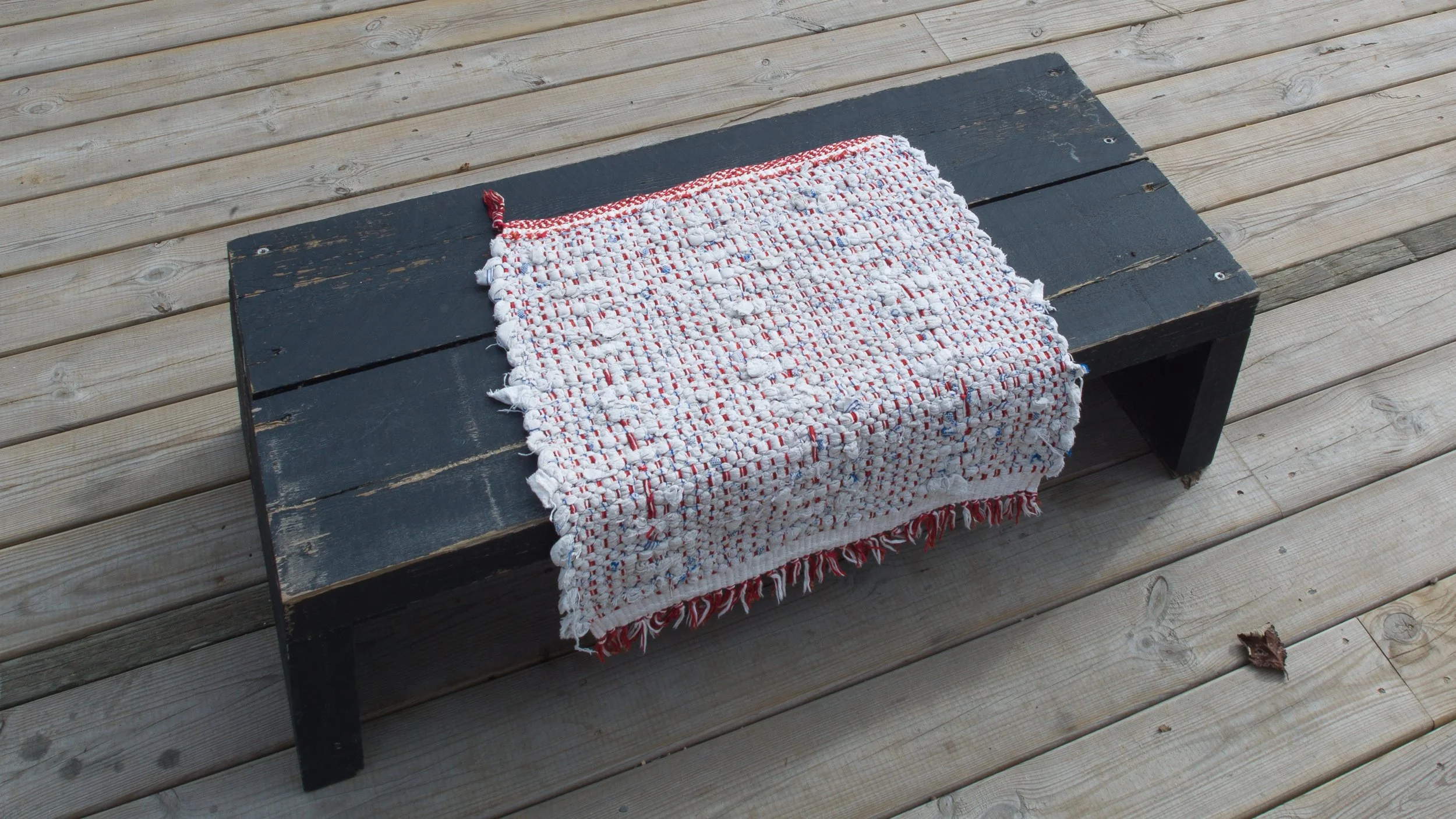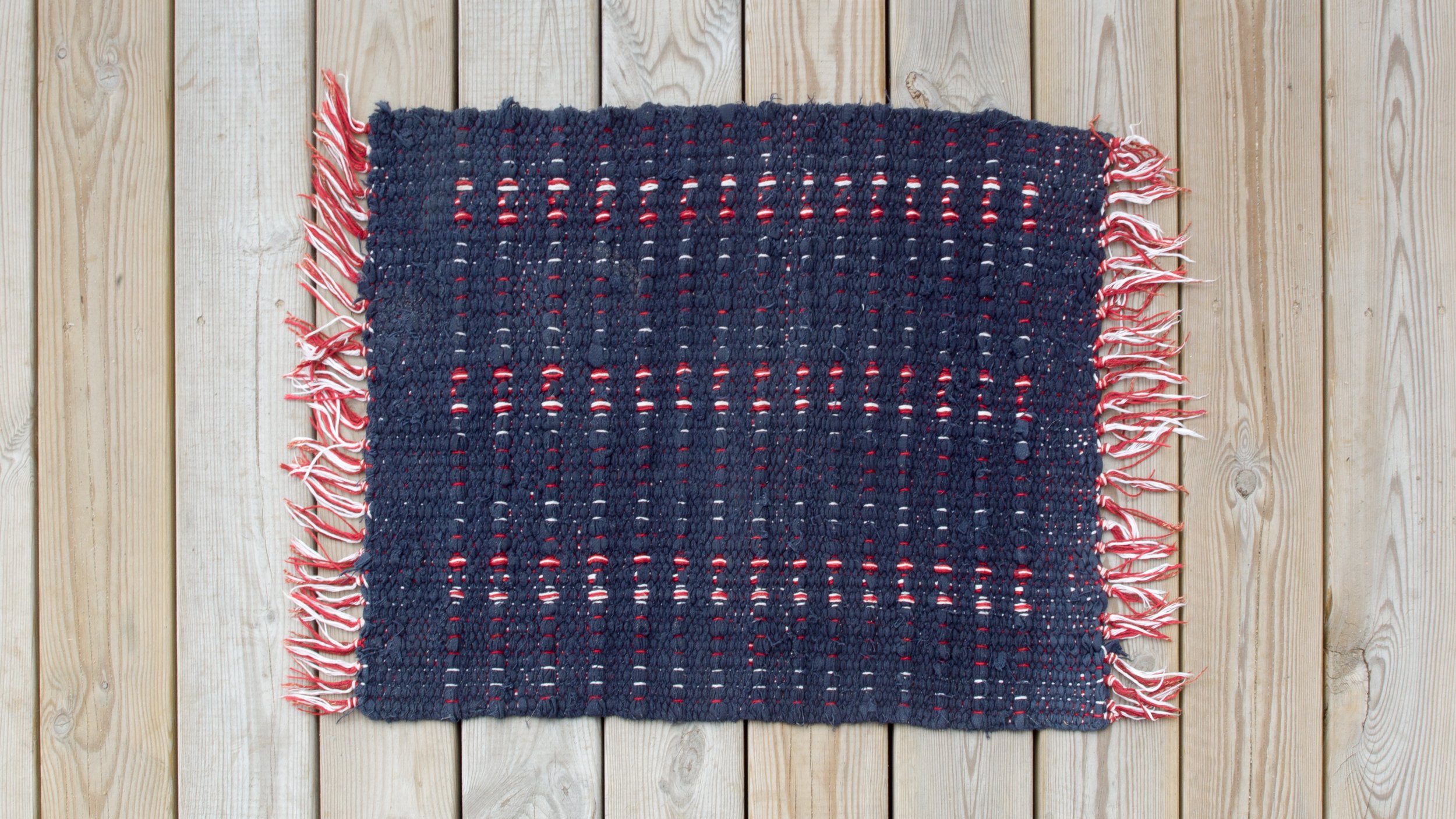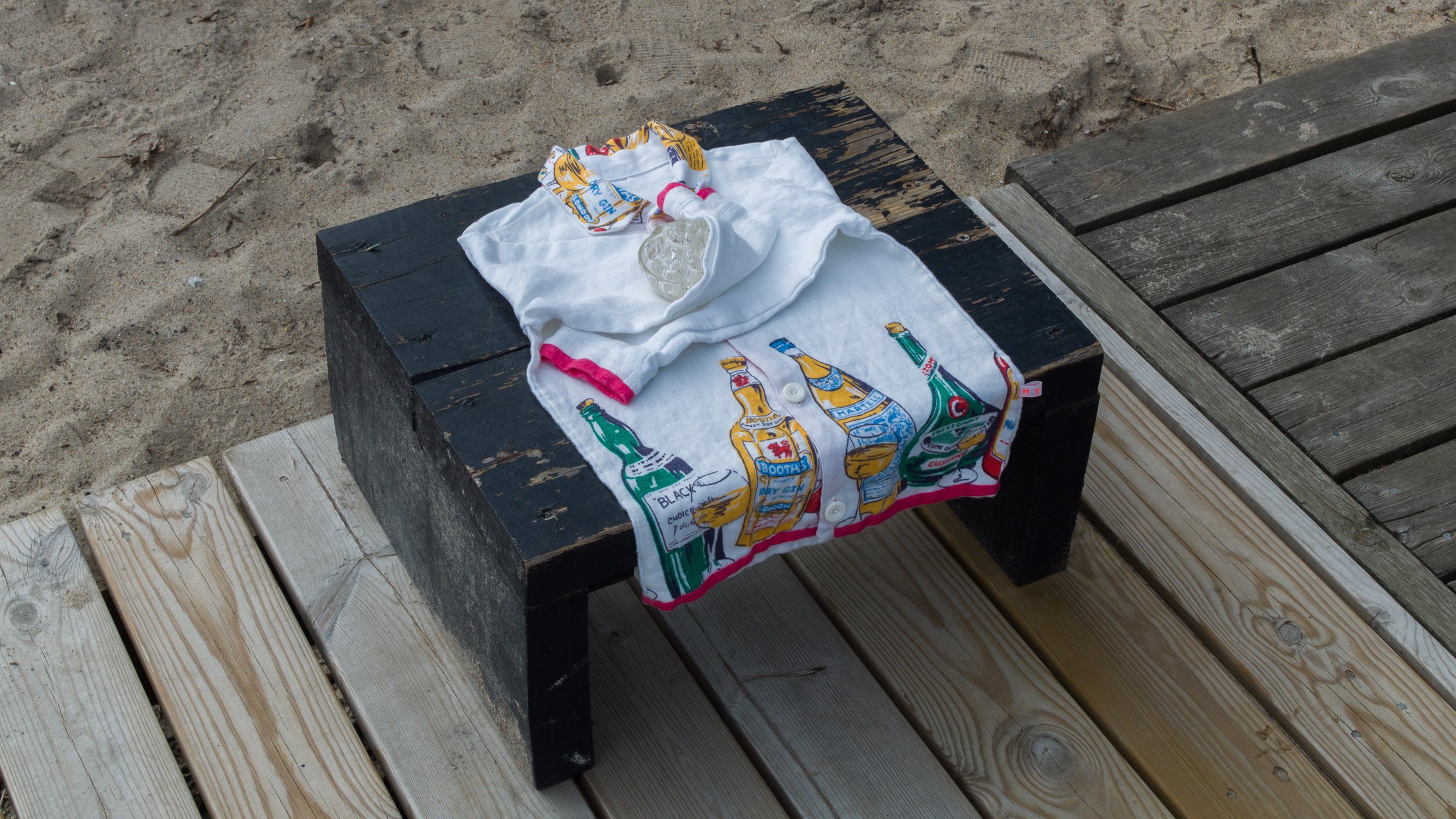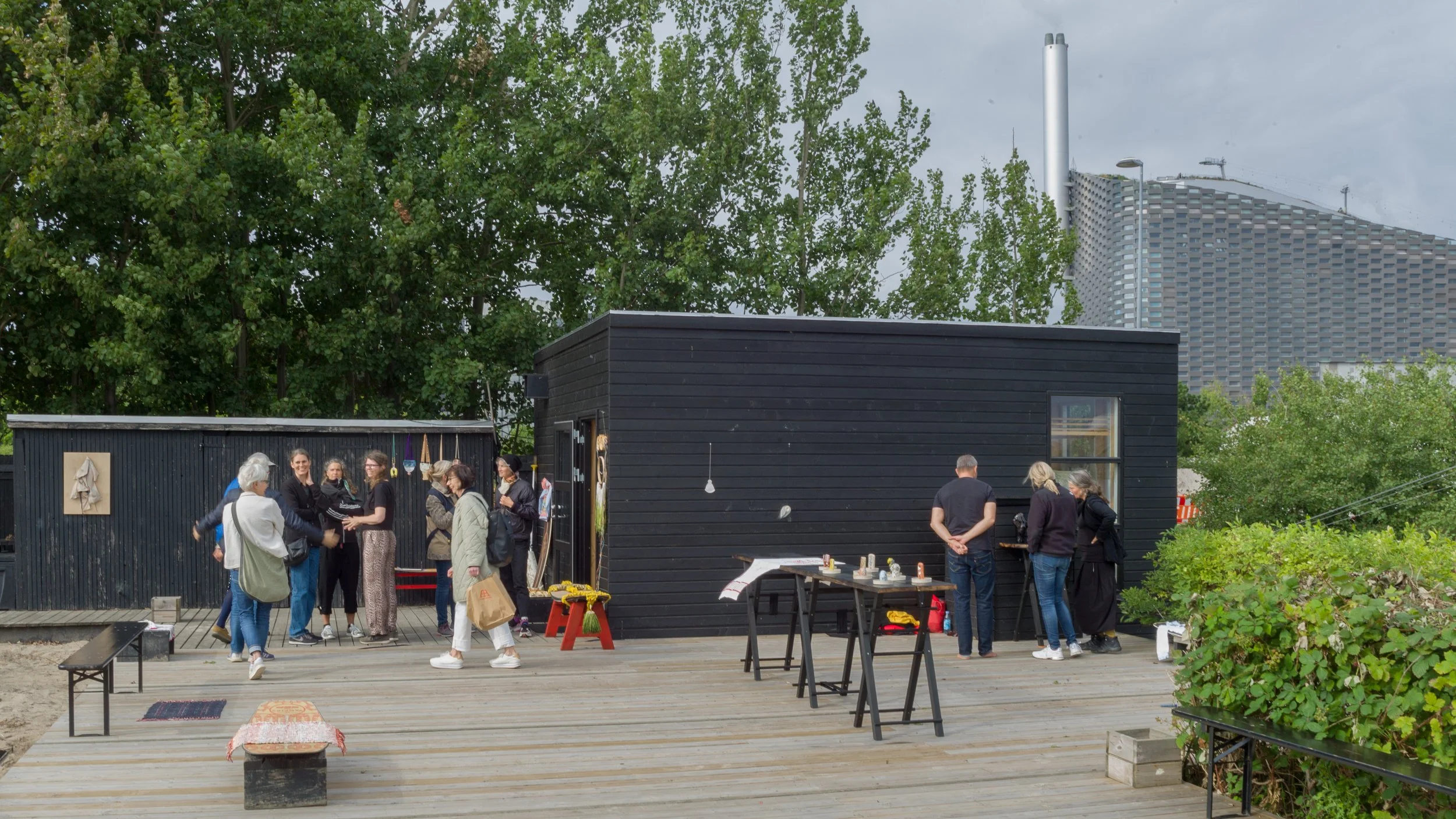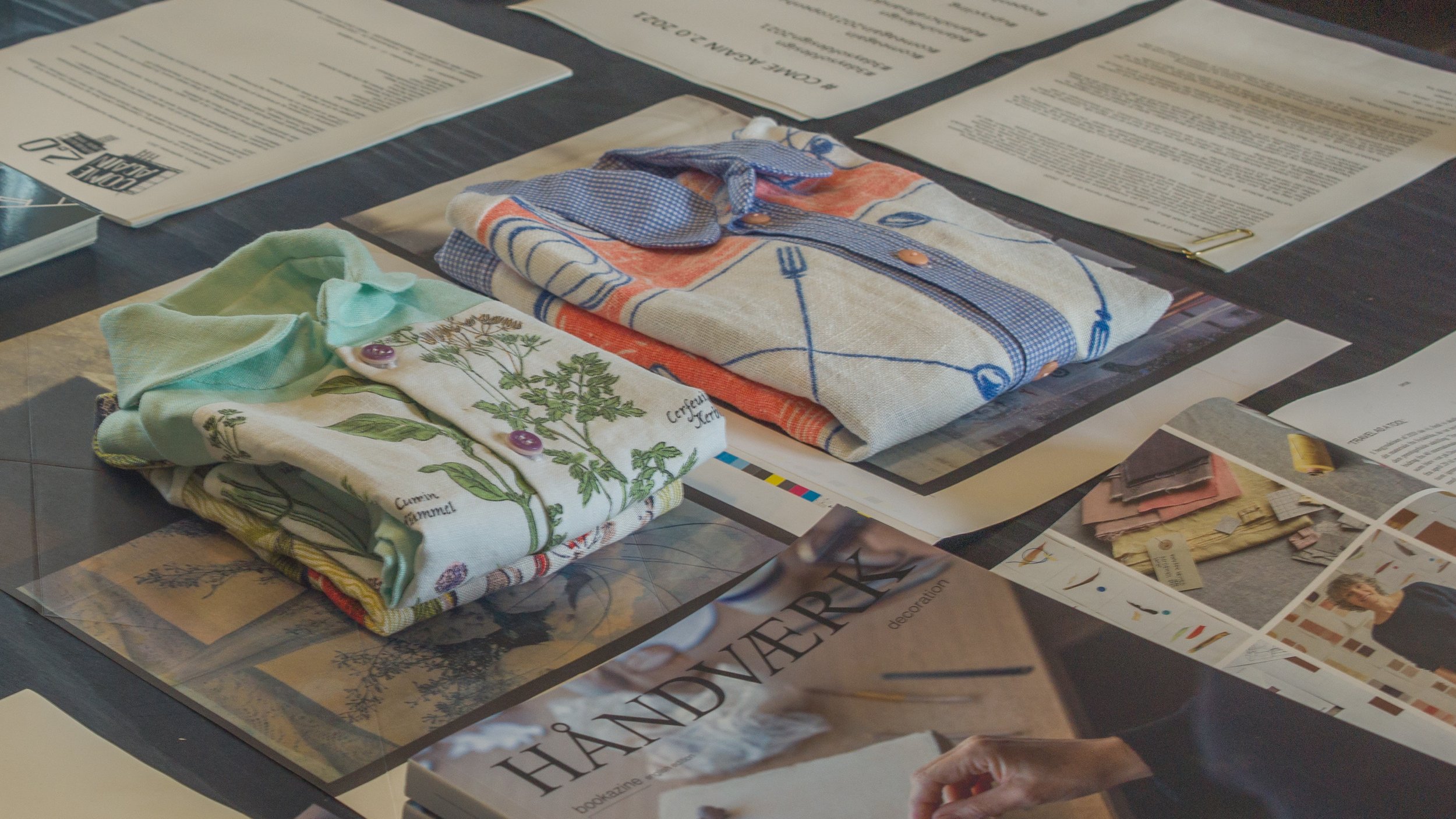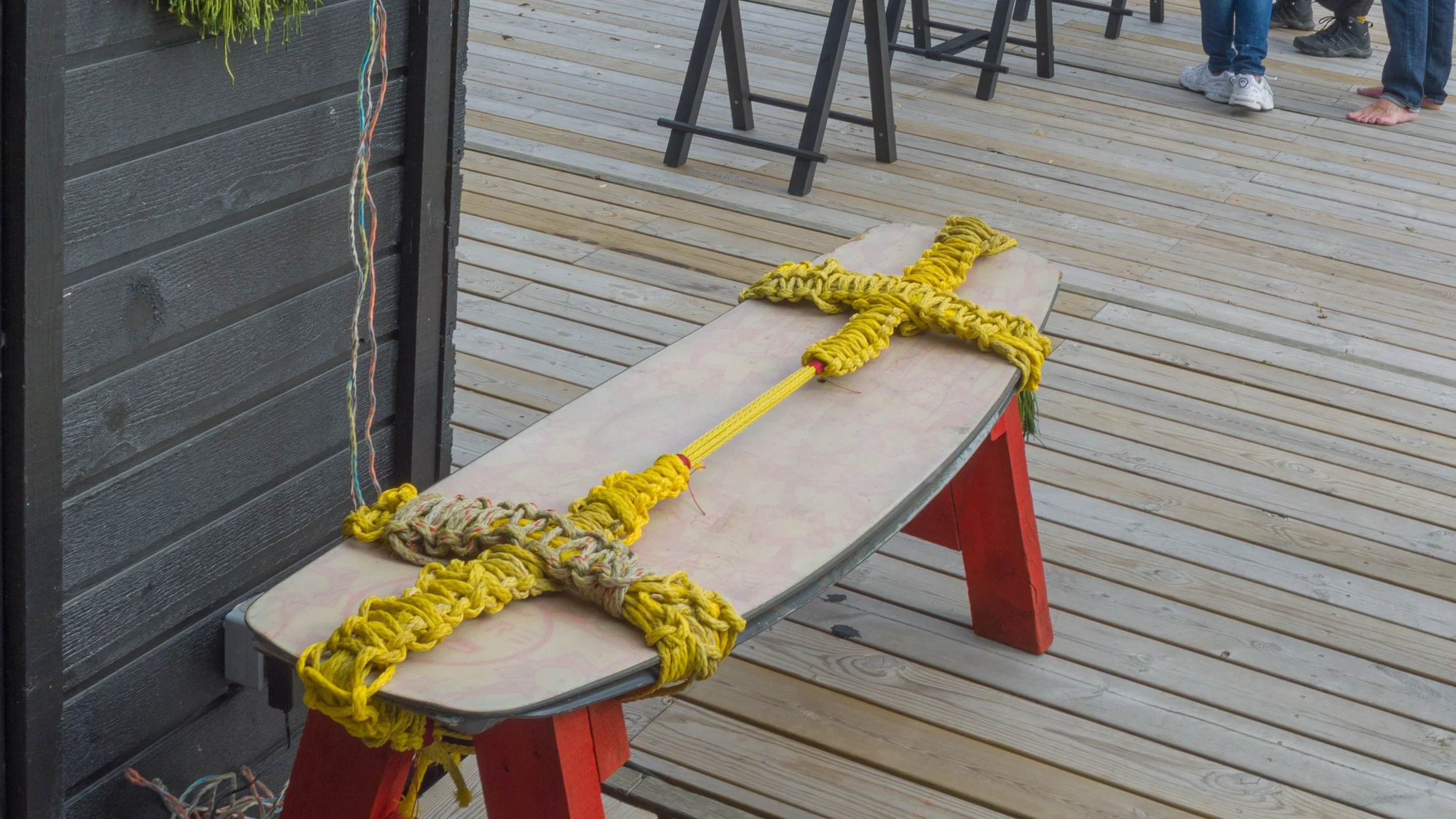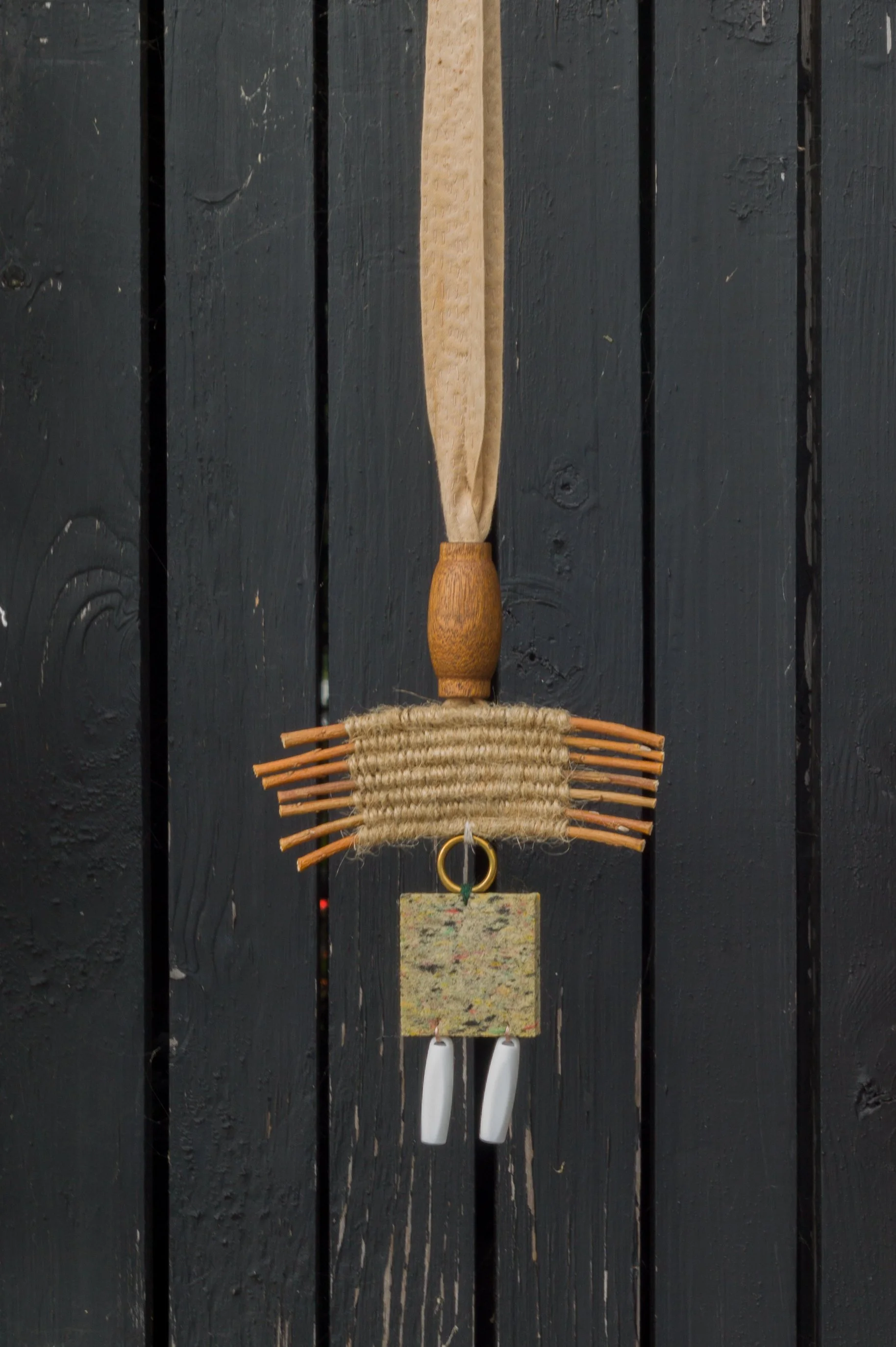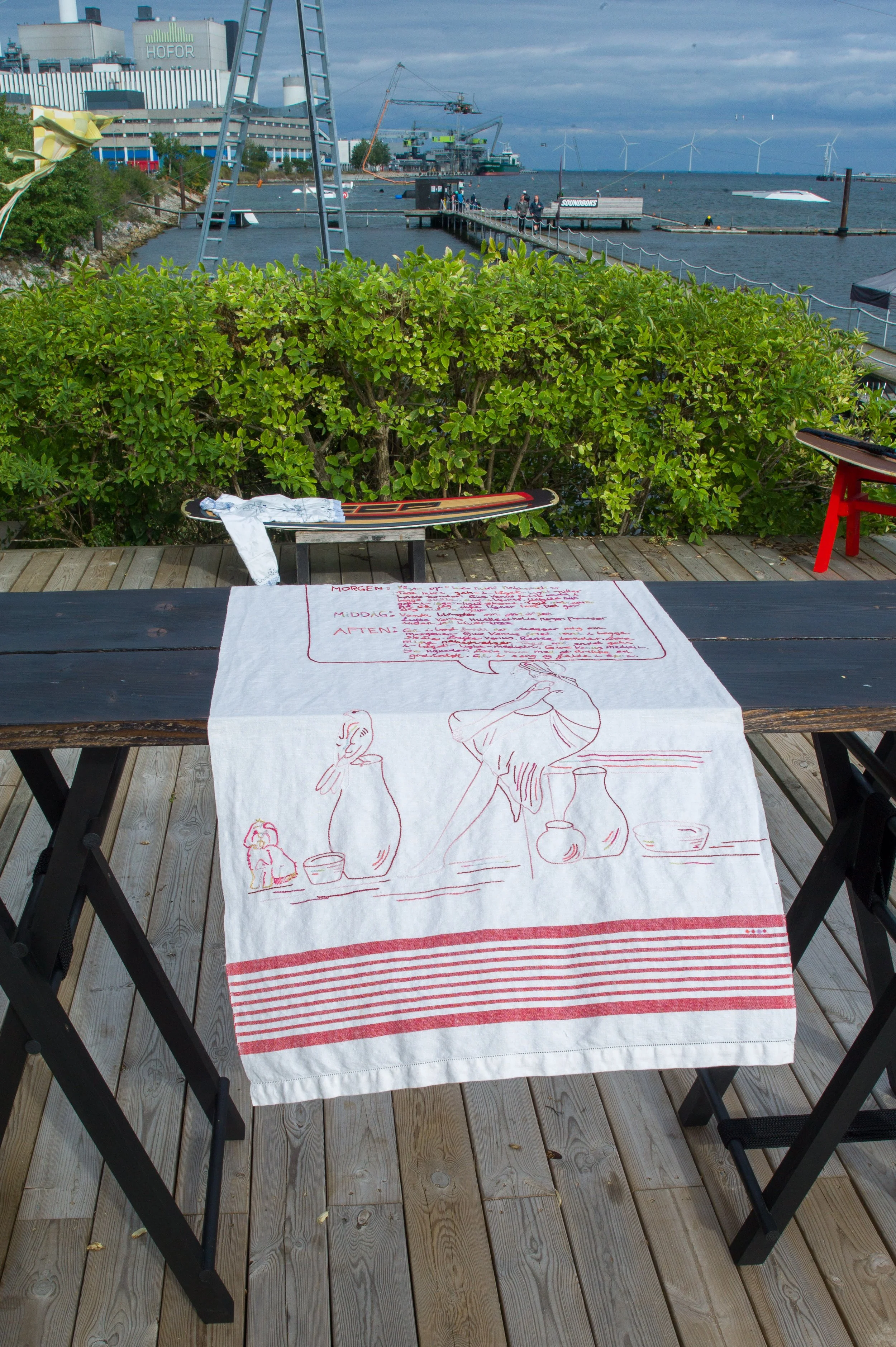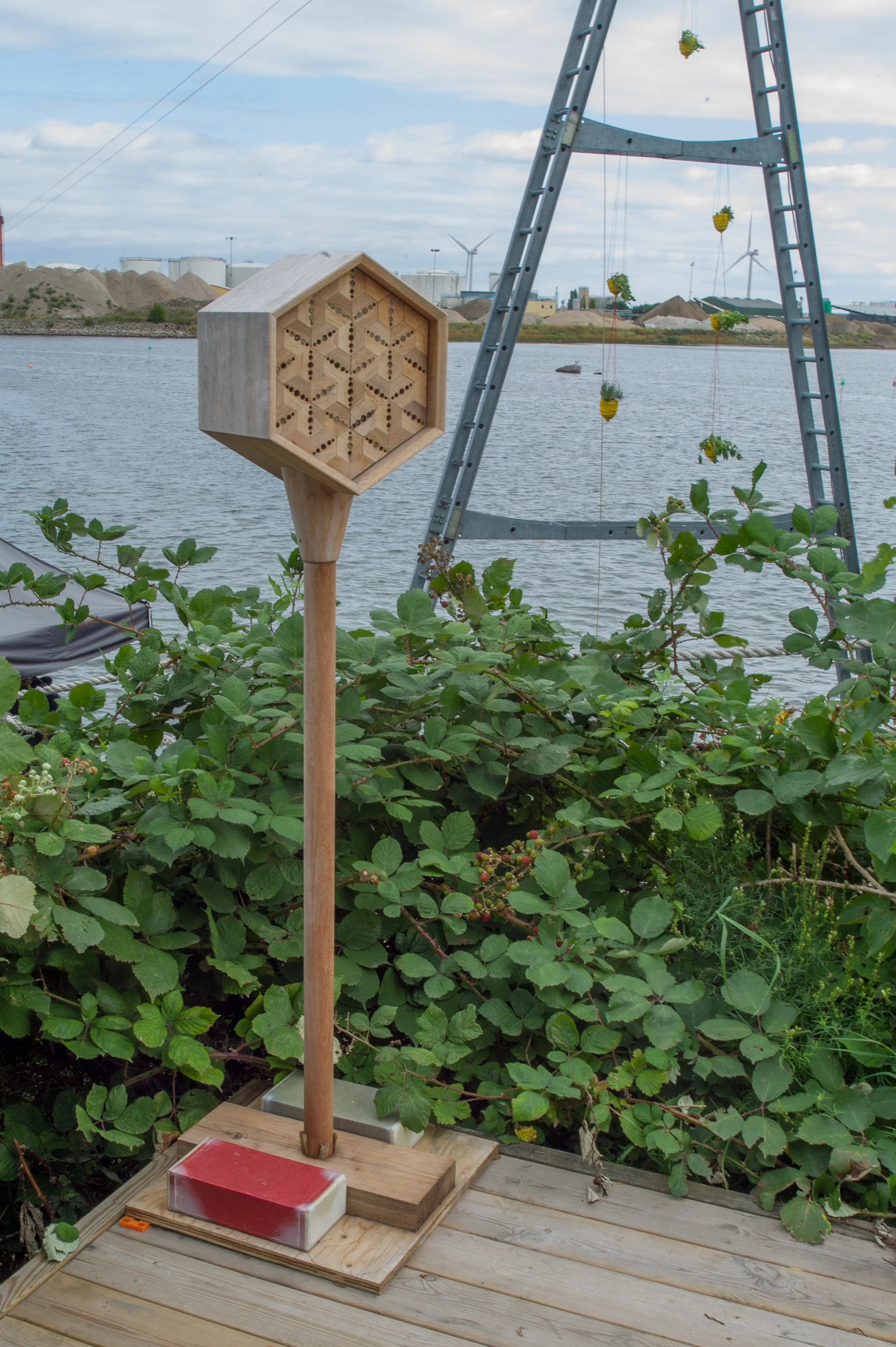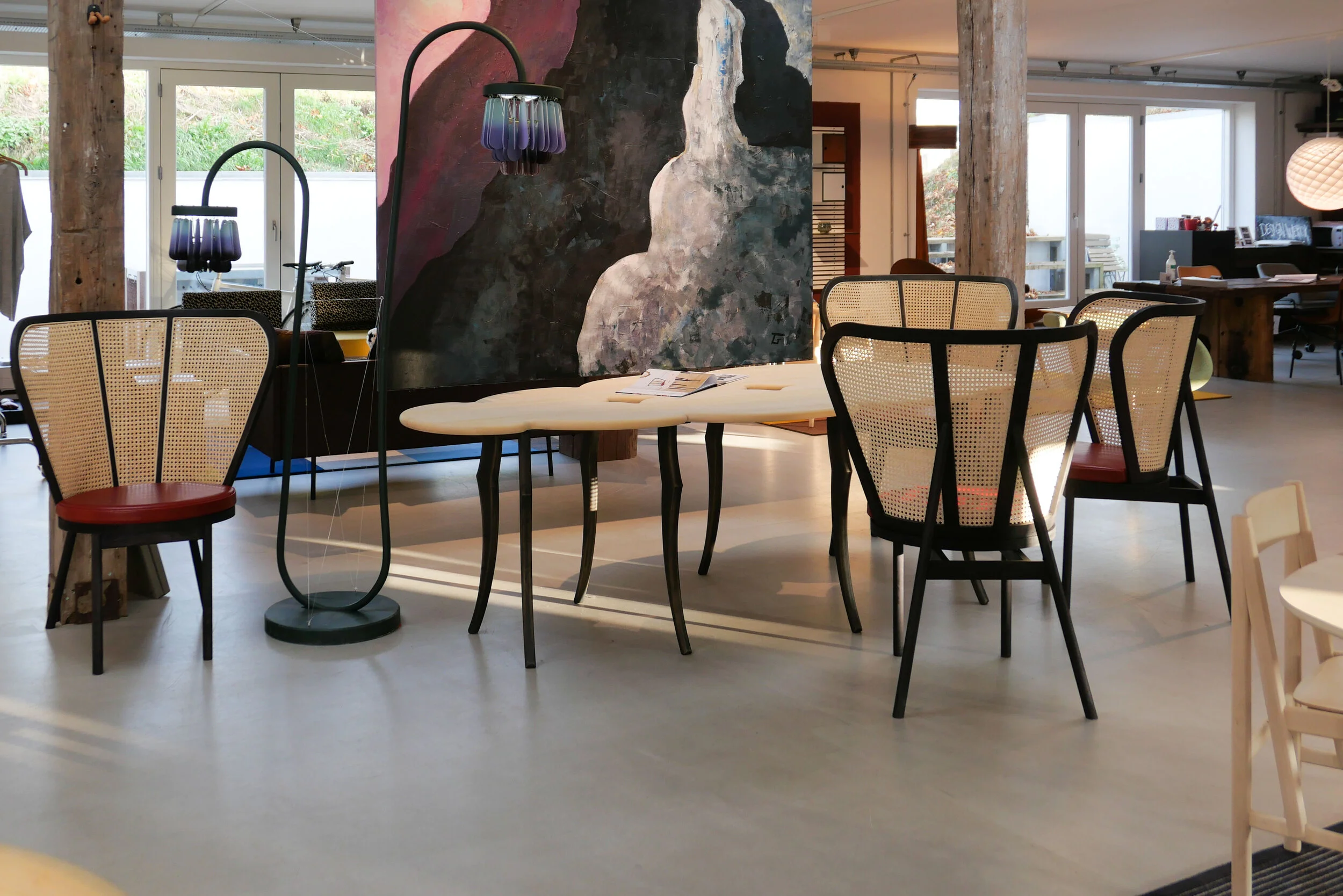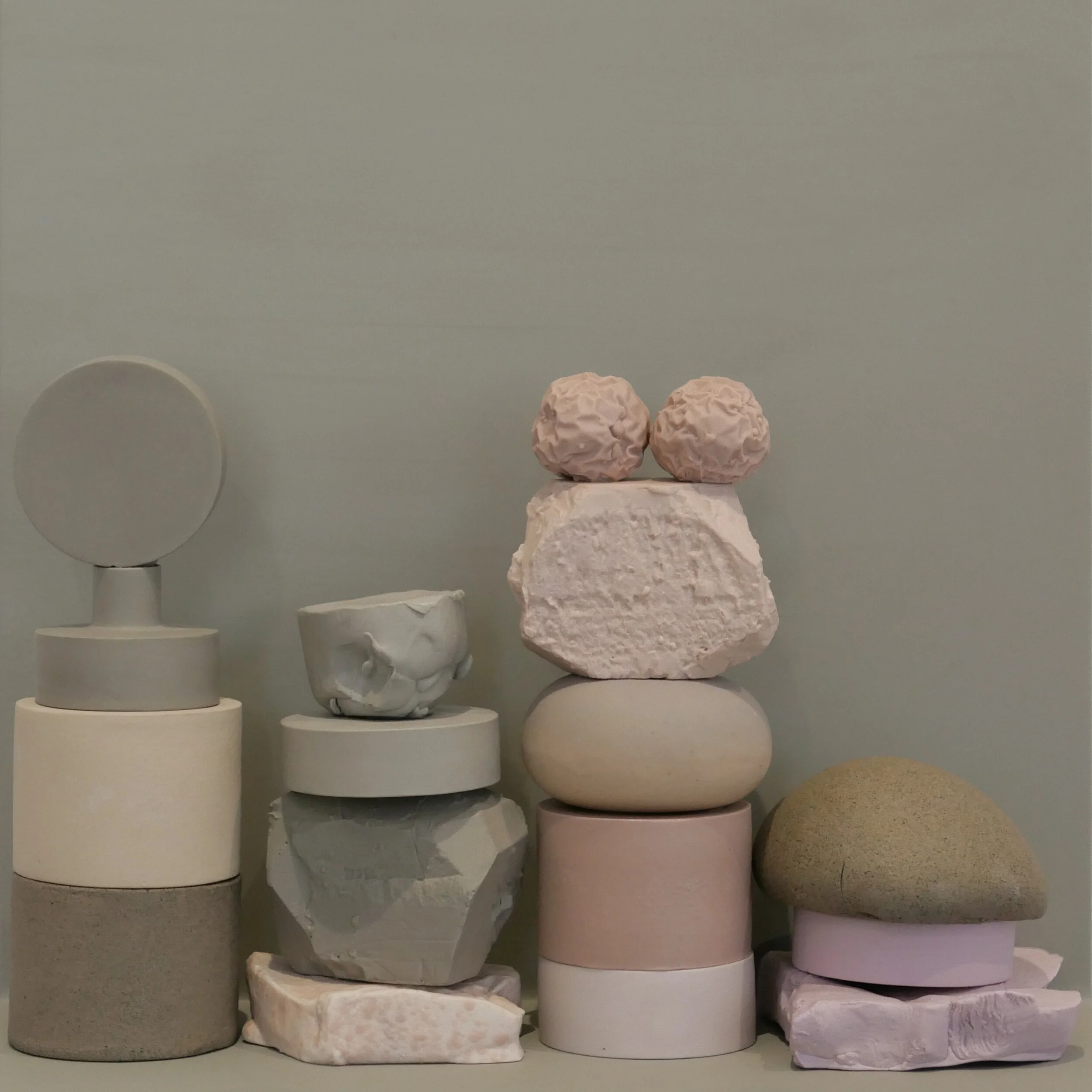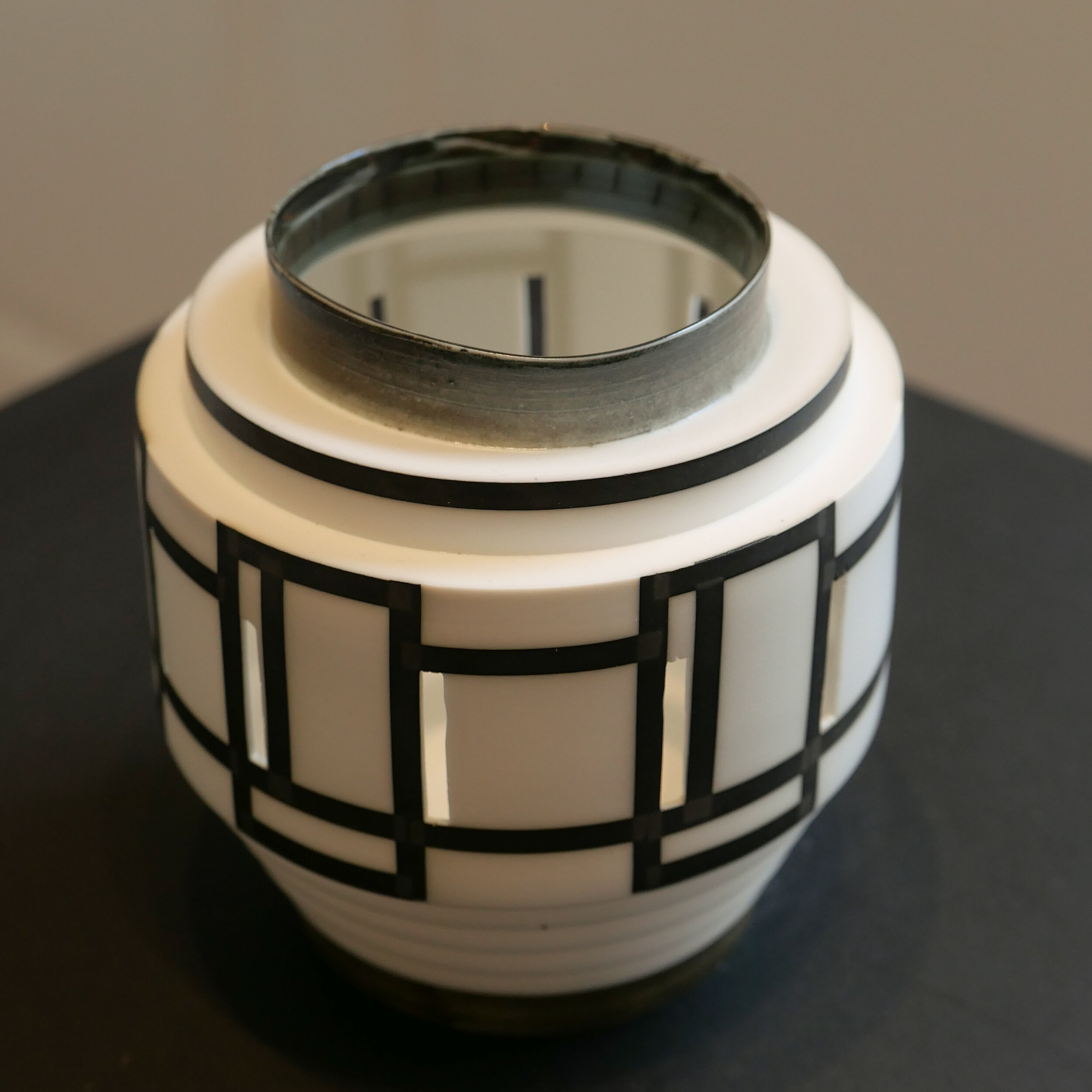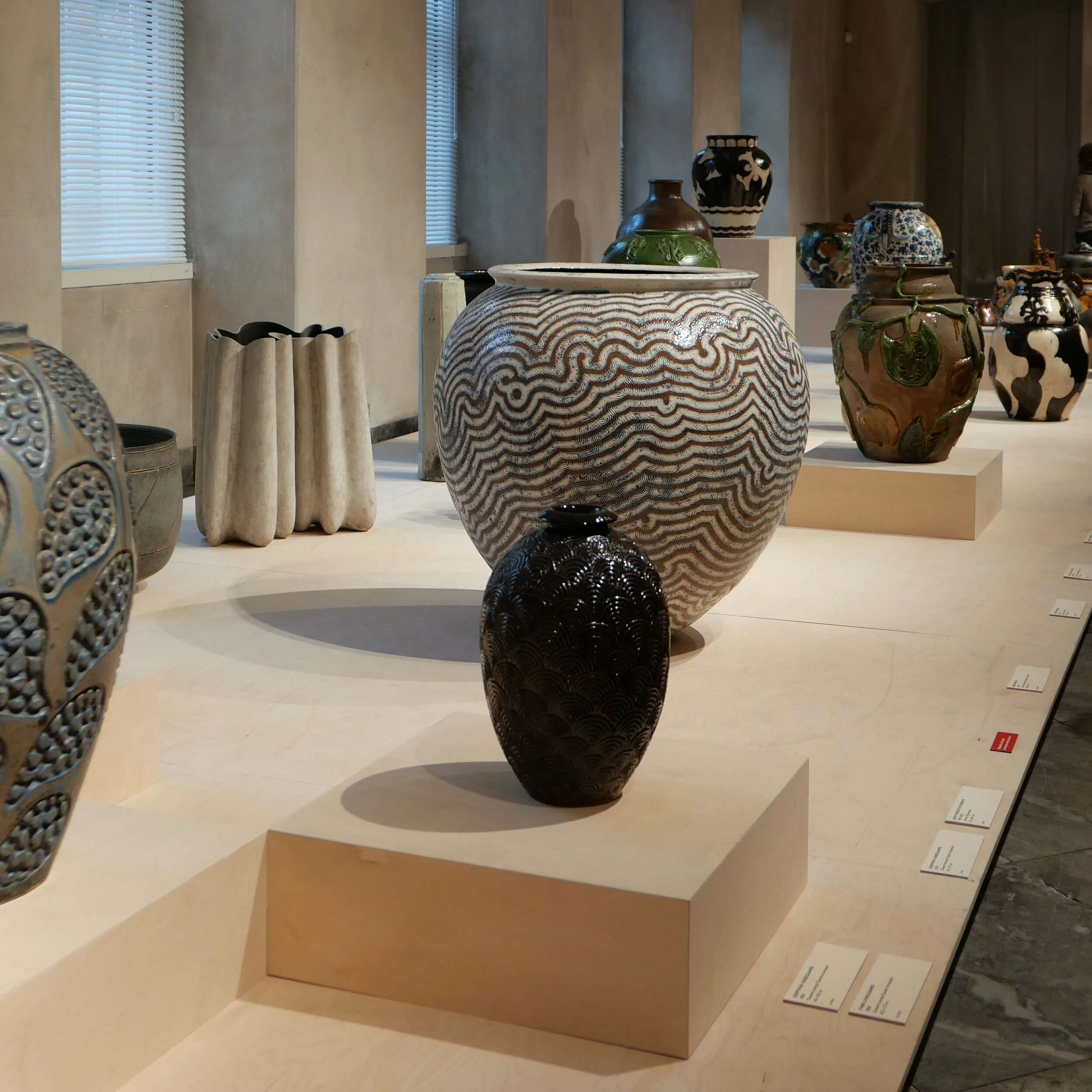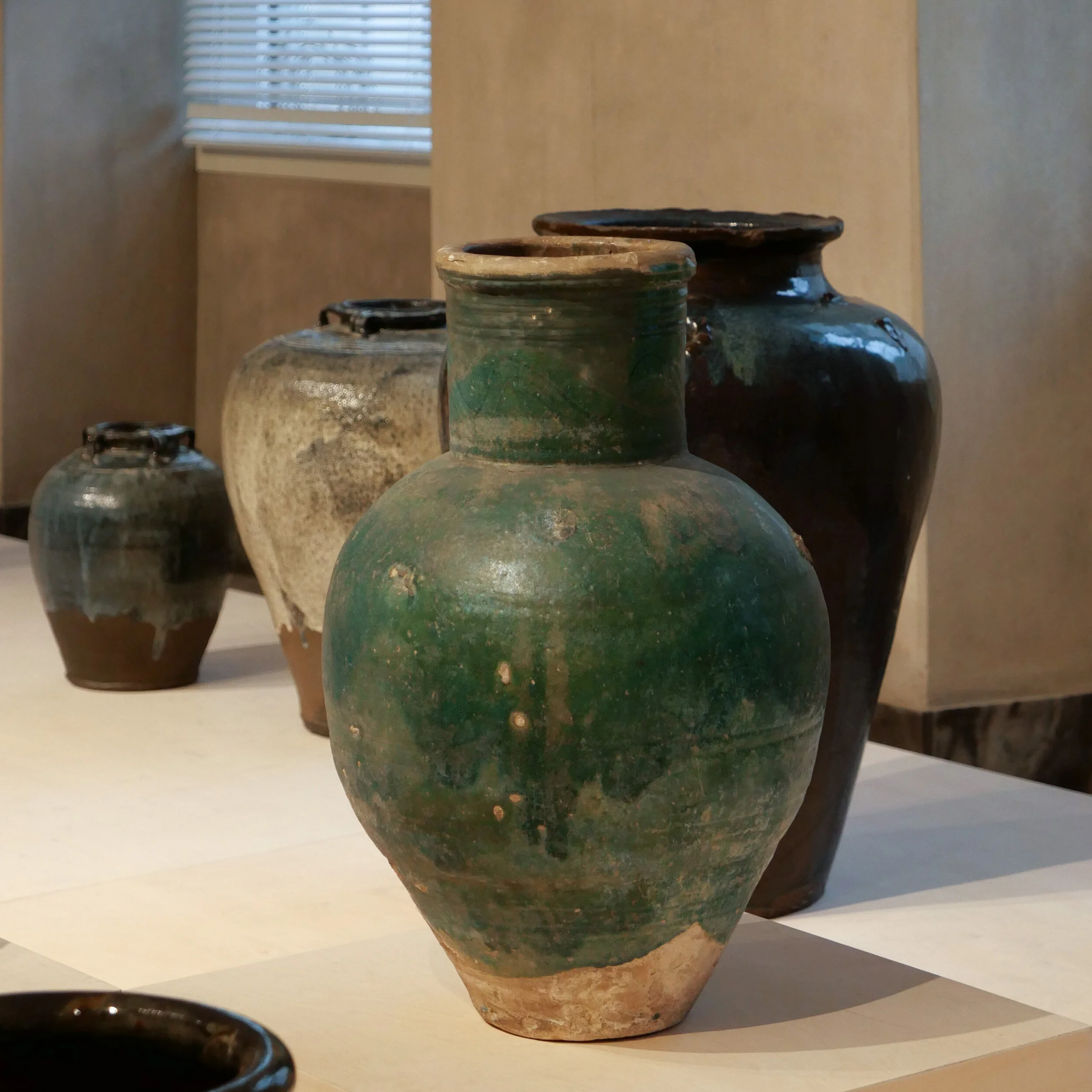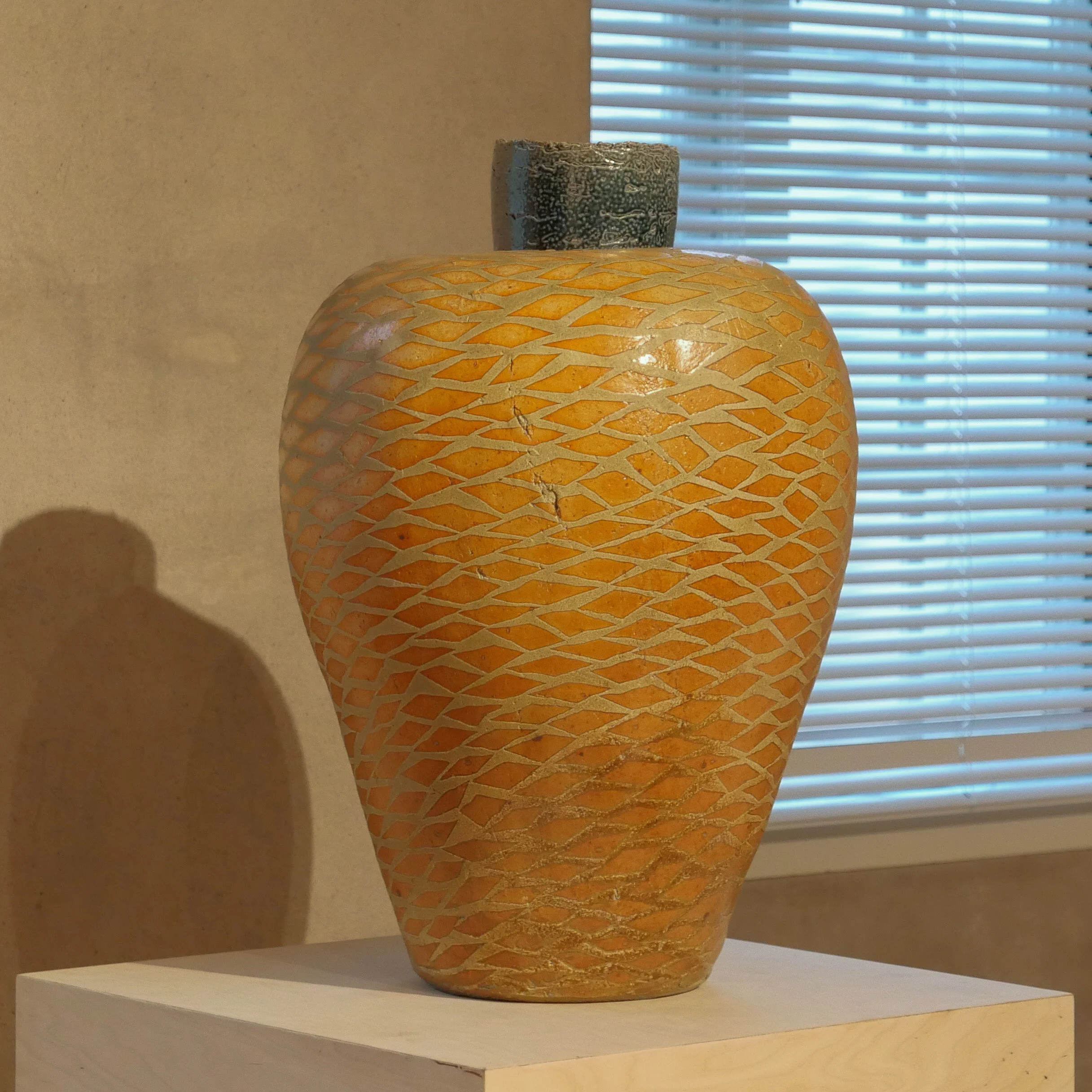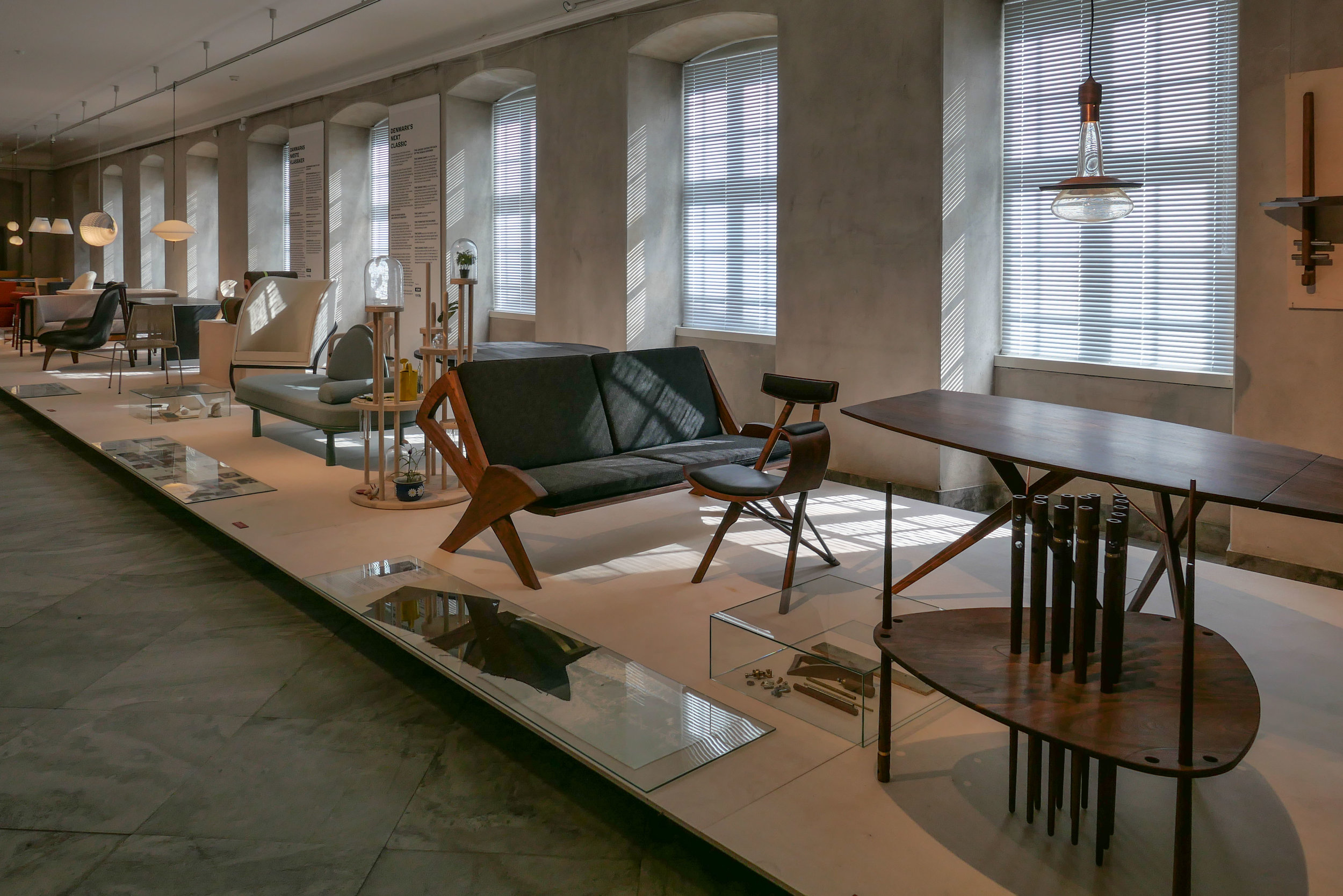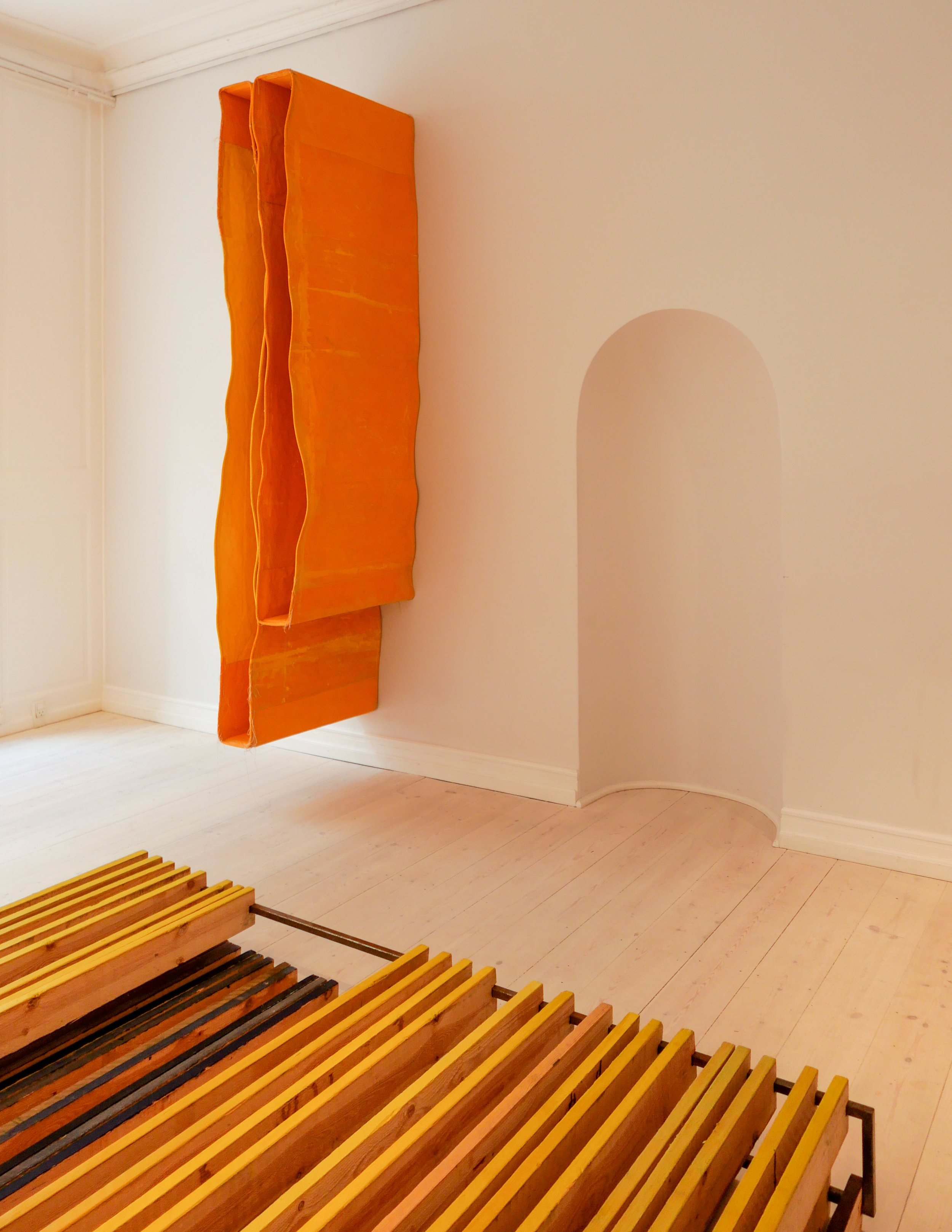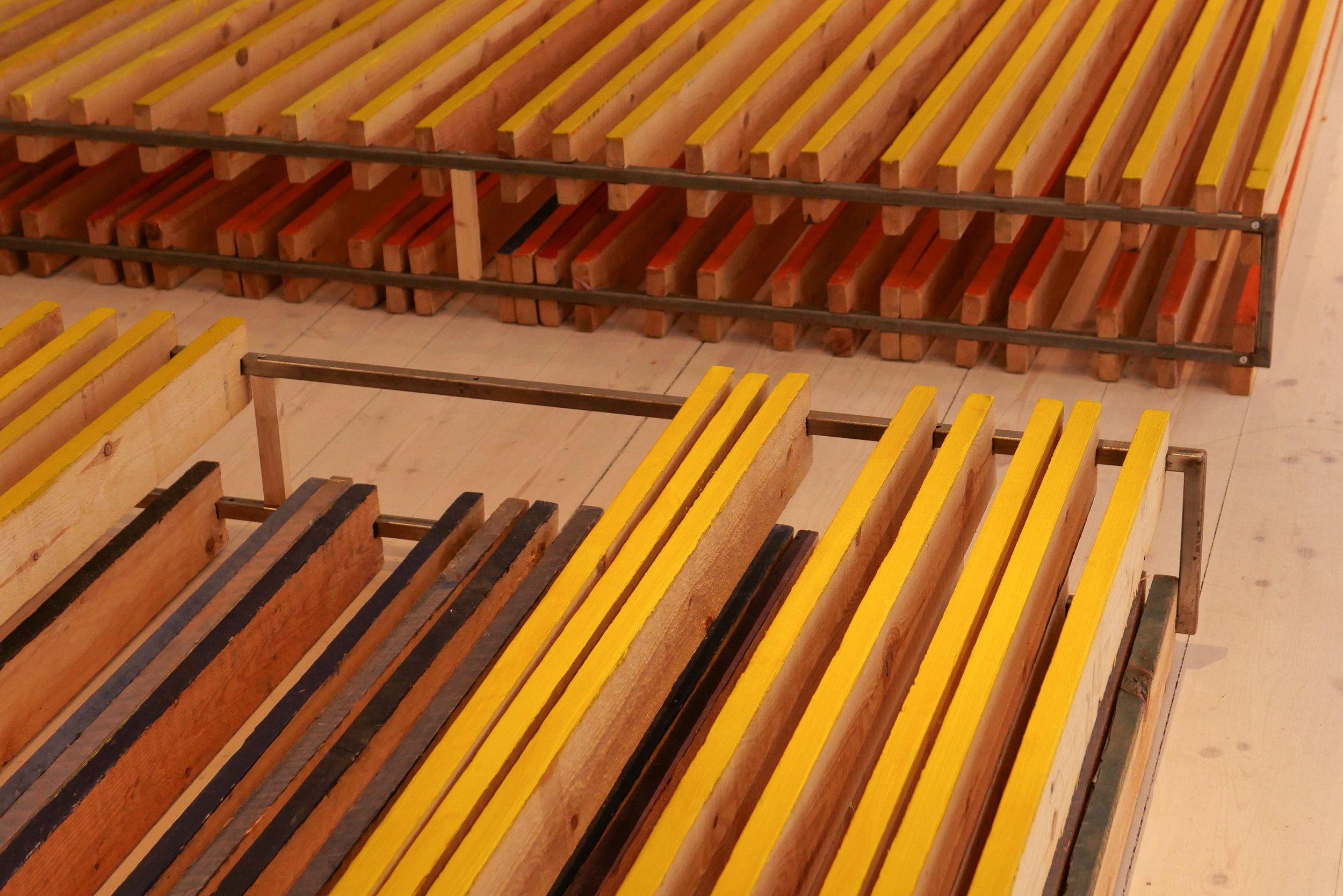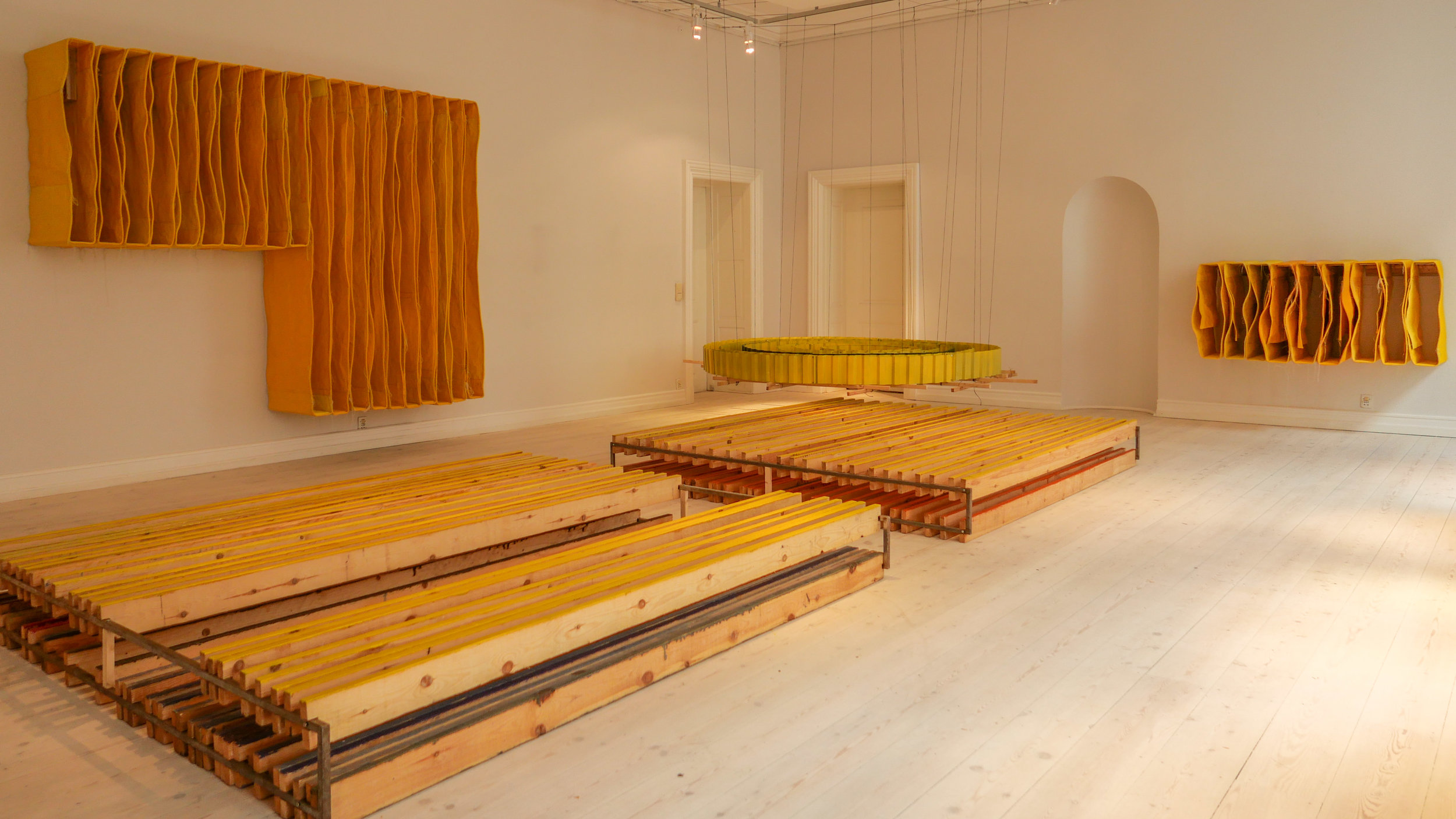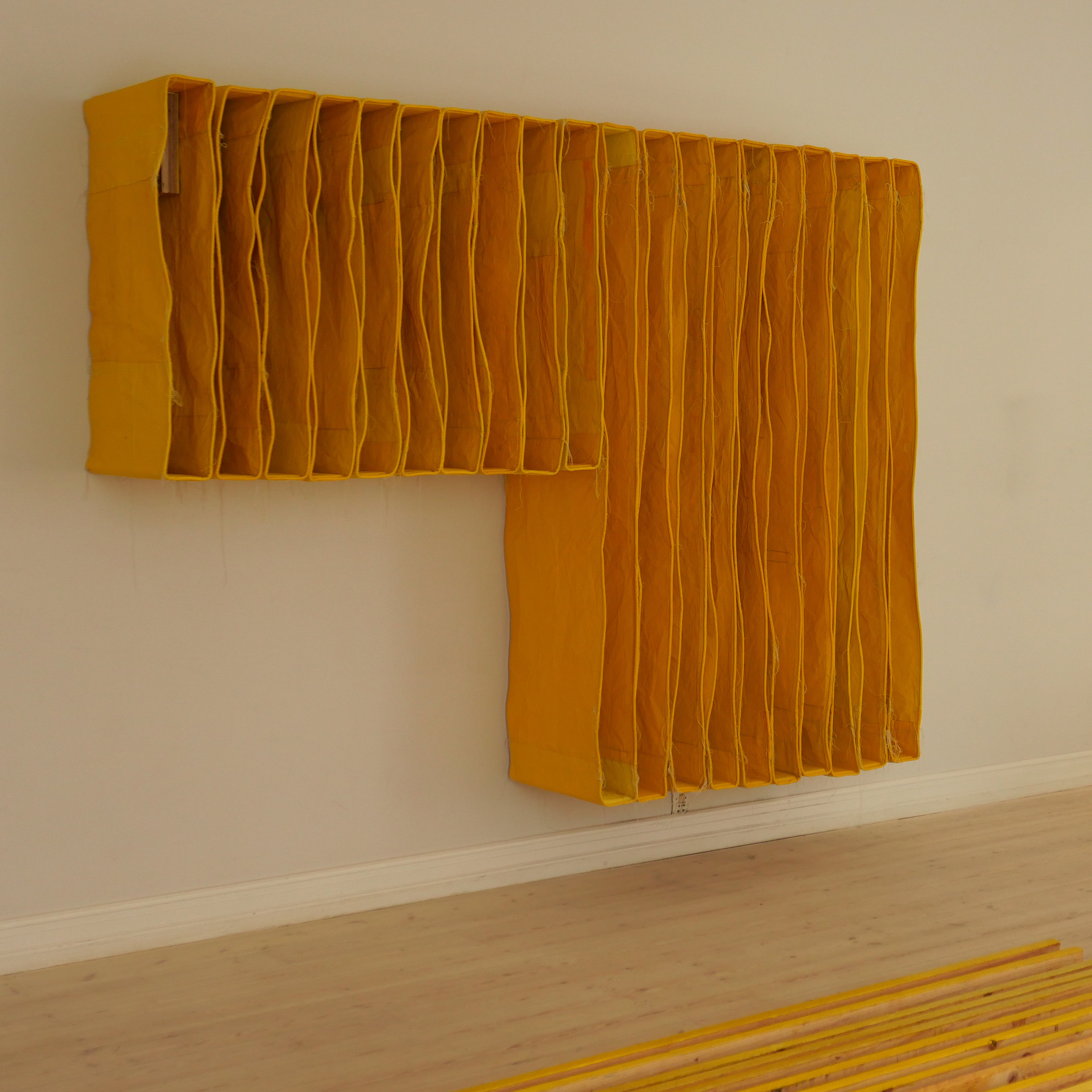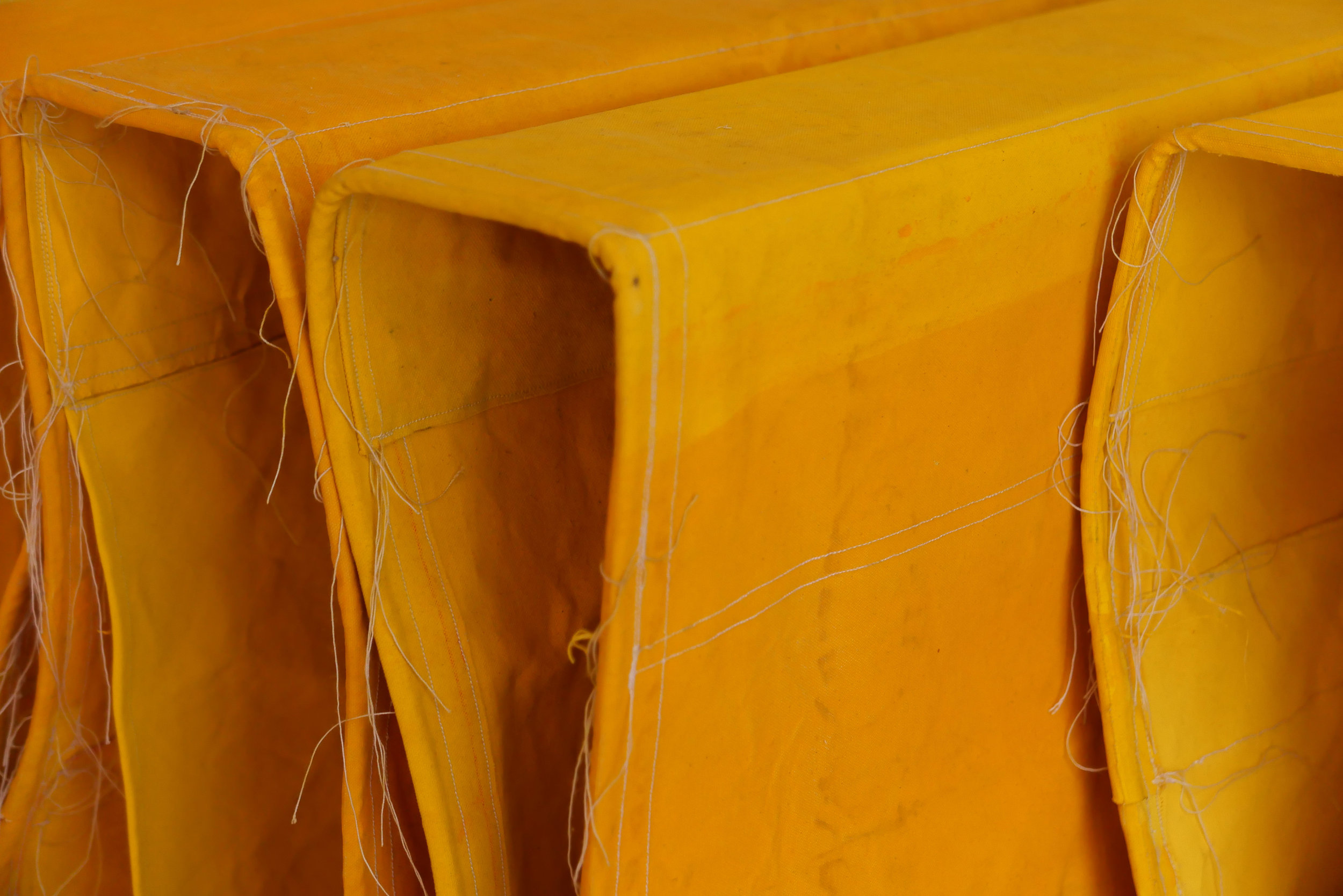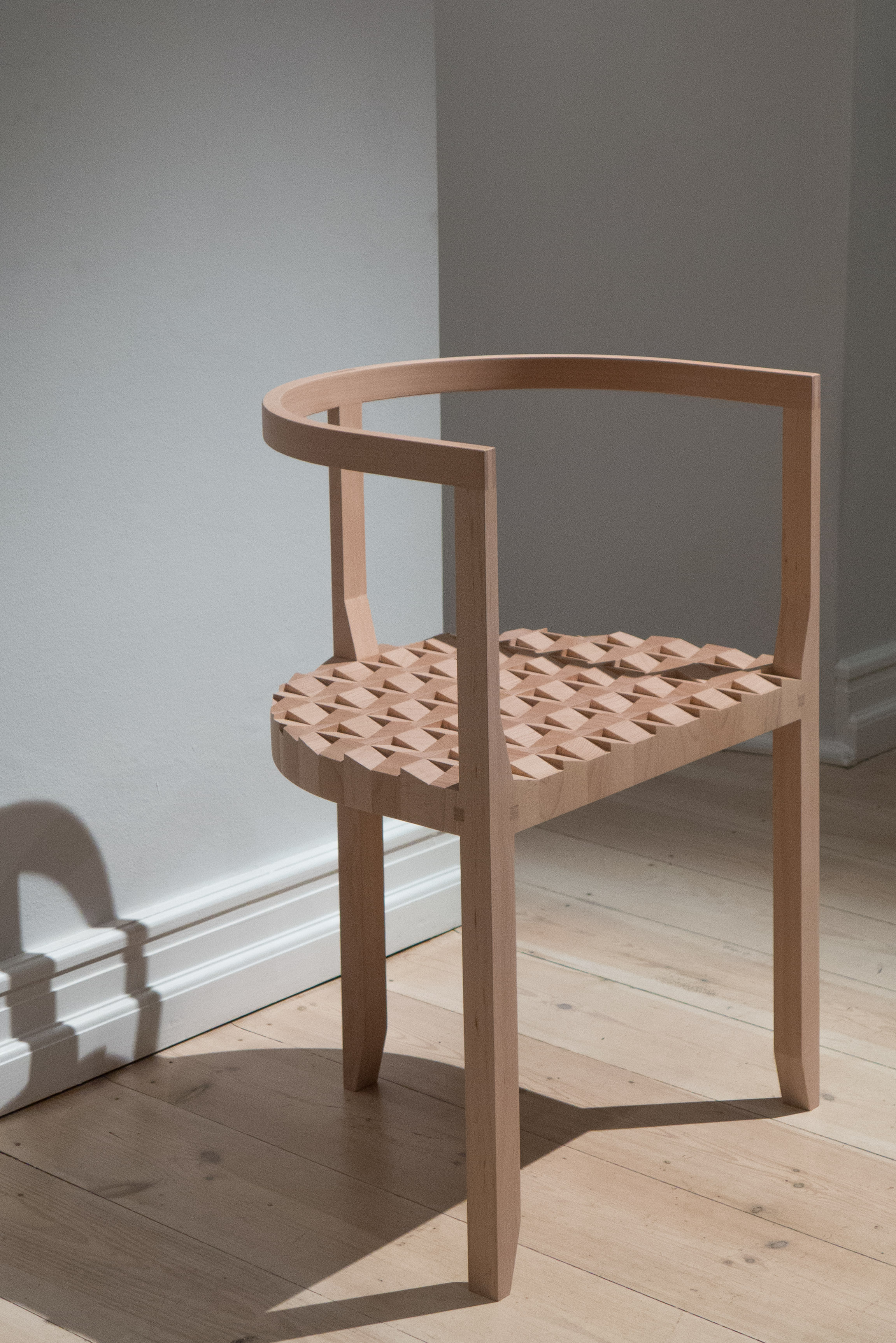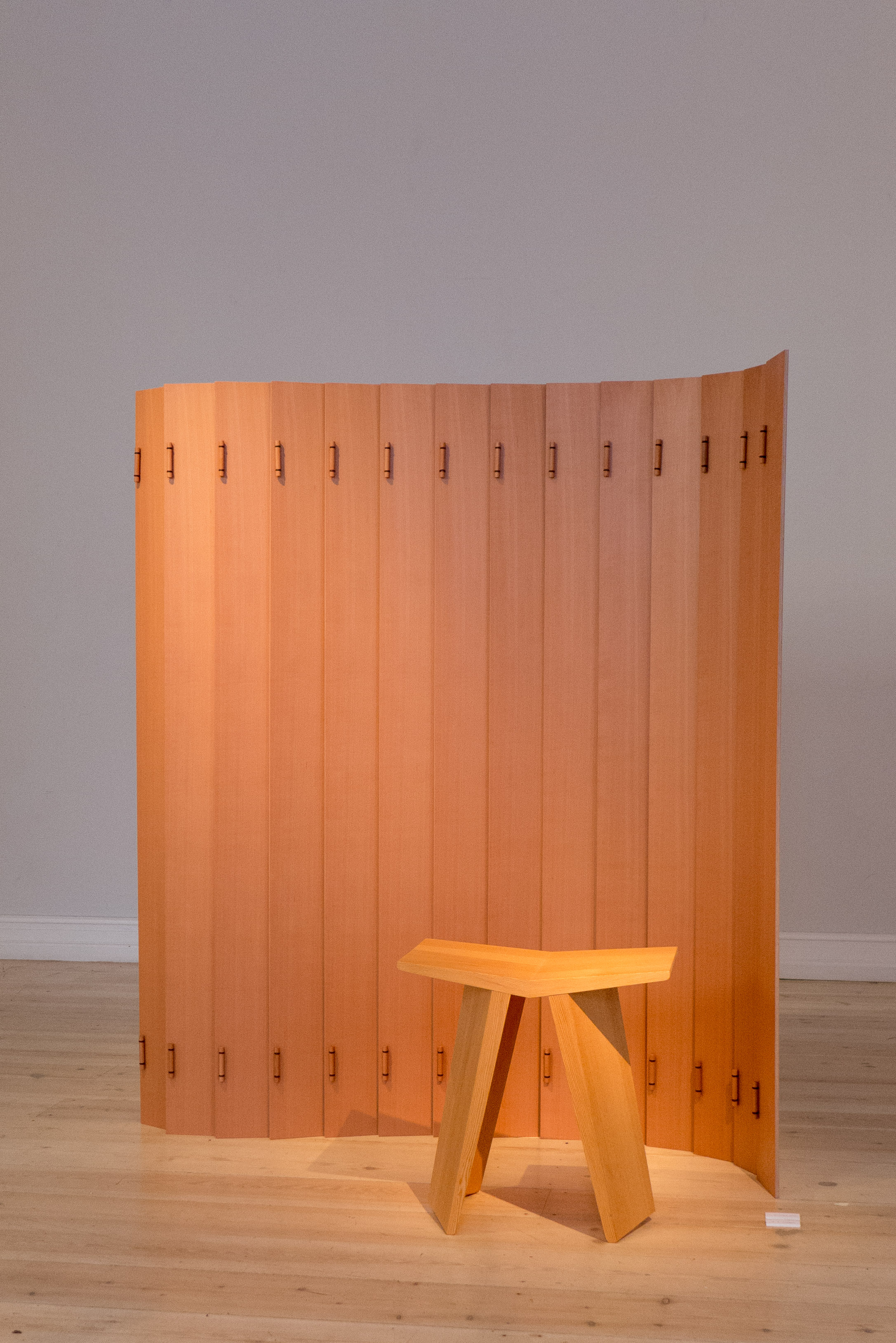An important exhibition of recent work by the furniture designer and architect Else-Rikke Bruun has just opened at the gallery of the Association of Danish Crafts and Designers in Bredgade .
There are several strong themes running through the works shown here but perhaps the most interesting and surprising idea is about not just defining space but also exploring shadow as a strong component as if it is itself a material element in the design.
Five screens in wood - the main works - define space but also occupy space and very considerable care was taken to set the lighting and to use the natural light of the gallery so strong shadows on the floor dissolve the sharp edge between the vertical of the screen and the horizontal surface of the floor and views through the screen and light coming through the screen from the other side change as you move round the space.
After completing her training as an architect Else-Rikke Bruun studied Arabian architecture for three years and here not just the fragmenting of light but also the use of precise geometric forms show the influence of Arabian architectural forms. Walking around the exhibition Else-Rikke explained that she is fascinated by patterns and the way we look for patterns and geometric pattern has a strong role in architecture of the Middle East, North Africa and southern Spain.
Influence from Japan is acknowledged both in the way the screens and the arrangement of faceted blocks of wood in the chair and in small panels reference the Japanese art of folding paper - two panels in wood are titled Origami panel - but also there is the sense of a Japanese aesthetic in the calm and measured division of space - a key feature of the way the pieces have been arranged in the gallery.
All the works shown are made with incredible precision so they also have the quality of fine engineering - particularly in the way separate pieces are linked or joined together or have different forms of hinge: all the screens can be articulated to adjust the angles of the parts or the alignment of the whole screen and Knitted wood folds back in on itself.
Another strong theme is inspiration from textile art and that is shown directly in the titles of three of the works … Stitched wood, Massive weaving and Knitted wood. This is not just about how elements interlock - Veneer has what are in fact giant warp and weft in cut plywood - but, as with woven textiles, the visual character from a distance is different from the complexity and subtlety that is revealed as you move closer.
Four of the works exploit the properties of laminated wood and develop different techniques for cutting to shape, bending, linking or interlocking plywood.
Use of colour is important but generally subtle … the screen titled Massive weaving uses spray paint so colour is strong on the cross-cut ends of the battens but fades out along the length. This work was developed with the colour artist Malene Bach. Generally subtle except that Knitted wood has a strong colour on one side that counterposes the shadow as you look through the interlocking curves.
The exhibition is the culmination of over a year of work specifically but actually develops and builds on themes that were first shown by Else-Rikke Bruun in the craft Biennials in 2015 and 2017.
Immediately before the exhibition Else-Rikke Bruun had a residency at Statens Værksteder for Kunst / Danish Art Workshops in Copenhagen and in a longer review here both the development of the main ideas and themes of the exhibition and the role of the workshops in giving artists access to space and equipment to realise their work will be discussed.
Stools in Oregon pine were made by Anders Petersen Collection & Craft in Copenhagen.
Karmstol, the chair in the exhibition, took, as a starting point for its design, round-headed niches at each end of this gallery. It is not strictly site specific but does hint at just how carefully-considered this work is with strong references to the design of Classic Danish chairs while experimenting with both form and construction techniques. It is an important piece that blurs our artificial boundaries between art, craftsmanship and utility and will be the subject of a separate post.
Danske Kunsthåndværkere og Designere
Else-Rikke Bruun
30 November 2018 - 20 December 2018
Officinet, Bredgade 66, Copenhagen





